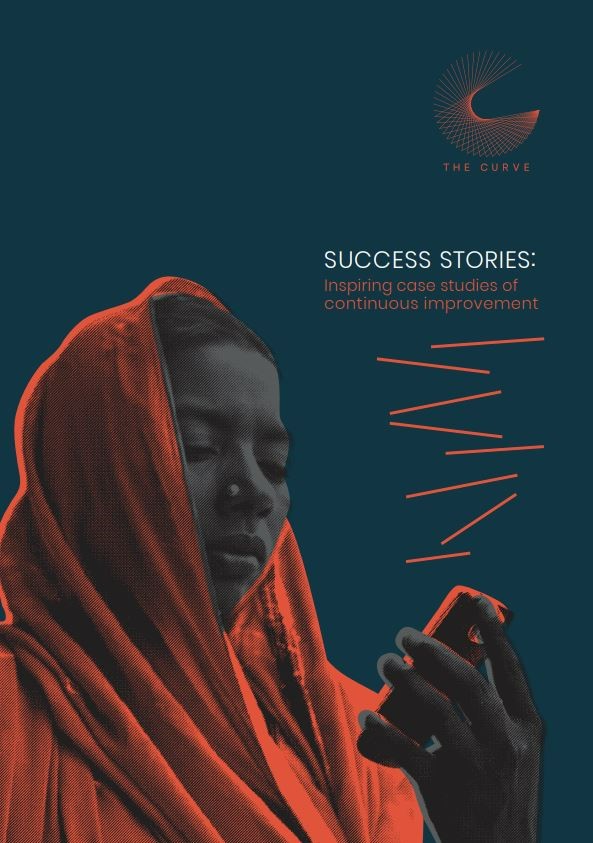Your colleagues from different parts of the world are using Responsive feedback to improve what they do.
If you are interested, review the list of case studies below to find out how they have used responsive feedback to get better faster.
If you are short on time, select and review at least one case study that interests you the most.

Case studies


Click the image to download the resource “Success Stories-Inspiring Case Studies Of Continuous Improvement” .
This resource tells you 15 incredible stories of how your colleagues, with different backgrounds and from different parts of the world, have used Responsive Feedback to improve and achieve the impact they want.
Success stories are a great way to learn about the CURVE process in action. If you would like to read more case studies, the following list has been sorted by which step of the CURVE process they speak most clearly to.
1. Step 1: Convene stakeholders
- Testing Family-based Care Messages for Different Audiences. Read it here.
- Adjusting Intervention Strategies Using Feedback. Read it here.
- Outlining Clear Decision-making Frameworks. Read it here.
2. Step 2: Uncover assumptions
- How to Use Responsive Feedback to Re-design Demand Generation Strategy: Experience From Integrate Project in Lagos State. Read it here.
- How SCIDAR Uncovered Assumptions in Their Program: the Northern Nigeria States Routine Immunization Strengthening Project (NNRISP). Read it here.
- Using Responsive Feedback to Iterate Theories of Change – Naijacare. Read it here.
3. Step 3: Reveal learning opportunities
- How CHAI Improved Post-pregnancy Family Planning Service-delivery in Nigeria Using Responsive Feedback. Read it here.
- Using Responsive Feedback Mechanism to Iterate the Design of a Family Planning Radio Program for the Nigerian Audience. Read it here.
4. Step 4: Seek evidence
- How Kaduna State Overhauled Their Service Delivery Architecture Using Responsive Feedback. Read it here.
- The Use of Low-cost Data Control Rooms to Improve Data Quality and Increase Demand for Data Use in Decision-making. Read it here.
- Using Data Quality Assurance to Improve Decision-making Processes in Nigeria. Read it here.
- Turning Tacit Knowledge Into Explicit Feedback Using Net-map. Read it here.
5. Step 5: Evolve
- Using Responsive Feedback to Train the Next Generation of NPHCDA Leaders. Read it here.
- Using Responsive Feedback to Re-prioritize Audience Groups for Self-inject Family Planning in the Rasudin Project. Read it here.
- How to Use Responsive Feedback to Better Enable System-level Change. Read it here.
- How to Use After-action Reviews to Learn and Improve: Lessons From the Breakthrough Action Guyana Team. Read it here.
- Using Responsive Feedback to Justify Program Redesign and Extension in Nigeria. Read it here.
- How HSCL Adjusted Their Health-system Strengthening Program to Remote Working in Light of Covid-19. Read it here.
See the Case Studies section of The Curve’s website for more.
Once you are done, share with peers in the comments below:
- Which case study do you find most useful for your own use of Responsive Feedback and why?
- What questions or comments would you like to ask or share with the case study author?

Be First to Comment